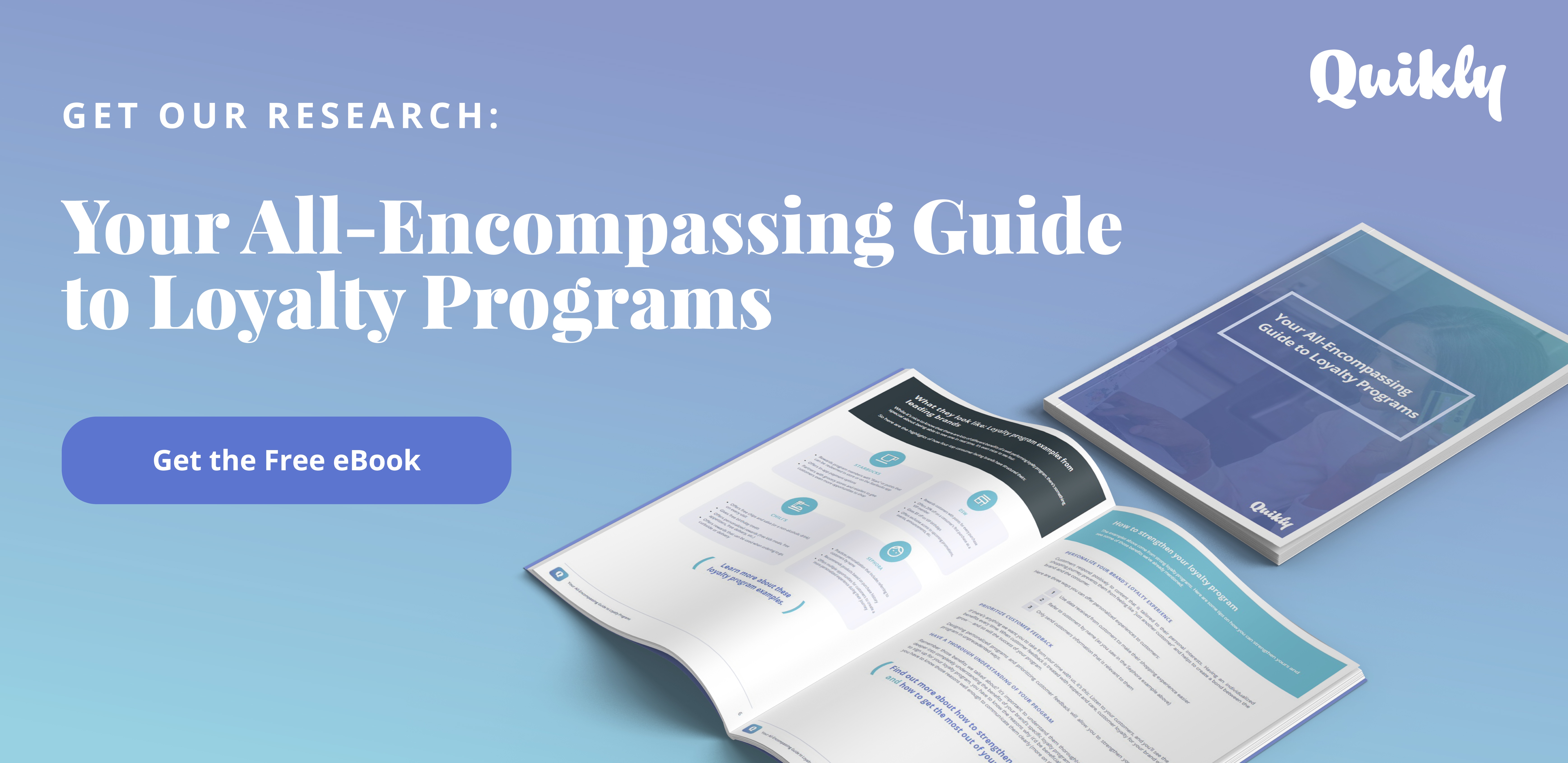
The psychology behind loyalty points

There’s something to be said about goal-setting — working toward something that you can be proud of. For some, having a goal provides motivation and positive feelings of anticipation around a potential accomplishment. It keeps them engaged in the activity and excited about what’s to come.
These sort of human emotions aren’t to be ignored; they should be embraced, and your loyalty program is the optimal channel for nurturing them. After all, consumers enjoy seeing the progress they make while shopping with a brand.
With the help of John F. Tholen, PhD, licensed psychologist and author of Focused Positivity: The Path to Success and Peace of Mind, and Gregory Yong, Chief Experience Officer at Convincely, we’ll uncover why consumers respond positively to forms of progress tracking such as that seen within loyalty programs.
Why do consumers feel motivated by seeing their progress?
Everything has an origin story, including the psychological responses humans have grown accustomed to. Having a positive response toward seeing one’s progress, even in the form of loyalty points, is no different.
“The innate human desire for progress has spanned for as long as our existence," said Yong. "People want to be farther than they were yesterday, and it's this primal drive to be better which has since carried over into consumers' purchasing habits and decisions. Marketers and consumer psychologists have since recognized this and adapted progress into their campaigns for greater success."
Aside from the instinctual need to thrive at high levels, simply seeing indicators of progress toward an eventual goal is enough to motivate humans to stay on course. With enough short-term rewards, brands can prompt consumers to perform similar actions that’ll bring about a certain outcome.
“Observable, immediate indicators of progress [otherwise known as short-term rewards] usually control our behavior more than our hope for changes that might appear later [or long-term rewards]," said Tholen. "We frequently experience conflict between our desires for gratification now (e.g., eating rich foods, having a drink, snuggling under the covers for a few minutes longer, purchasing non-essentials, etc.) and in the future (e.g., improved fitness or health, a positive performance review, etc.). When we hope to establish a behavioral pattern that will pay off in the long run, it can be essential to find enough short-term rewards to keep us motivated each day.”
Progress incentivizes humans to make forward movements
Your consumers may make a purchase out of necessity or without an extra push from you, but there’s no denying that a valuable incentive can make that purchasing decision easier. It might even inspire them to repeatedly purchase products from your brand in pursuit of the positive emotions that come from seeing their progress, as they continue to earn loyalty points or work toward another loyalty goal.
“Although we can sometimes 'white knuckle' our way through unrewarding tasks in pursuit of a long-term goal, we are unlikely to persist indefinitely unless short-term rewards are found that motivate us each day," said Tholen. "For example, most of us understand that our health would benefit from a daily exercise regimen but success usually depends on reaching the point that performance of the exercise routine results in mild euphoria or improved mood."
Providing your customers with loyalty points — or a progress bar toward points, tiers in your loyalty program, or other achievements — allows them to get a clear picture of how their purchases are leading them toward a greater outcome. It also helps to ease some of the pain they feel when making purchase decisions.
“If people feel as though making a purchase is helping them move toward something — such as a discounted or free product in the future — then they will almost always rationalize the purchase as an investment," said Yong. "In an effort to complete the progress bar or make use of their loyalty points, consumers will come back again and again. This technique can fast-track your ability to build brand advocates and entirely discourage shopping with competitors. The takeaway is to always give your customers something to work toward."
In addition to their ability to spark positive emotions in consumers, loyalty points and progress bars can also influence them to make purchases solely because they want to get a return on their progress.
“By adding things like a progress bar and loyalty points into their campaigns, marketers uncover a powerful driver of action which keeps customers coming back — intangible investment," said Yong. "Consider what 'progress' really means. It means that, compared to when you started doing something, you're now farther along in completing it. That's an investment of time, it's an investment of energy, and it's often a financial investment too.
"Most human beings do not like seeing progress go to waste. If you earn nine out of ten loyalty points, there's a high likelihood that you'll go out of your way to get the tenth. If you booked a movie for 30 dollars and later found out that it clashes with your doctor's appointment, you'll probably drop the appointment to go see the movie instead. This is the sunken cost fallacy in motion — the idea that consumers would rather follow through on an action if they already invested time, effort or money into it, regardless of whether the costs outweigh the benefits. Seasoned marketers understand that the sunken cost fallacy is highly prevalent in consumer behavioral dynamics, and it's something that can be tactically employed to help consumers independently rationalize making a purchase from you.”
Seeing one’s progress is crucial to the human experience, and the psychology behind it is beneficial to even the smallest of marketing campaigns. Understanding that your customers want to be reminded of the strides they’ve made while on their customer journey will help you to nurture their experience and fulfill their needs.

Lindsay Keener is a brand journalist for Quikly. She covers stories that help to inform and educate consumer-facing marketers.

